Best Uses for Sawmill Off Cuts 2025
- August 30, 2023
- 1 comment
Think of a sawmill as a big kitchen where wood is the main ingredient. Just as a chef carves out the best parts of a vegetable, the sawmill slices up logs to get the best wood. But what about the leftover bits? In the kitchen, we might make a soup or stir-fry with veggie scraps. In the world of wood, those leftover bits are called Off Cuts. And guess what? They’re far from useless! This year, 2025, has shown us some super cool and crafty ways to use these off-cuts. Let’s dive in and discover the magic hiding in these wooden leftovers!
List of Best Uses for Sawmill Off Cuts:
- Eco-Friendly Firewood and Kindling
- Crafting and DIY Projects
- Wood Chips and Mulch
- Animal Bedding
- Manufacture of Particle Board and Fiberboard
- Playgrounds and Outdoor Areas
- Erosion Control
- Mushroom Cultivation
- Smoking and Grilling
- Eco-art Installations
1. Eco-Friendly Firewood and Kindling
One of the innovative ways to champion sustainability is to look for alternative uses of materials that would otherwise be discarded. One such material is the off-cuts from sawmills, particularly the slabs and trim ends. These pieces are remnants from the milling process, often considered waste or of lesser value compared to the main lumber products. However, they have the potential to serve as efficient and eco-friendly firewood.
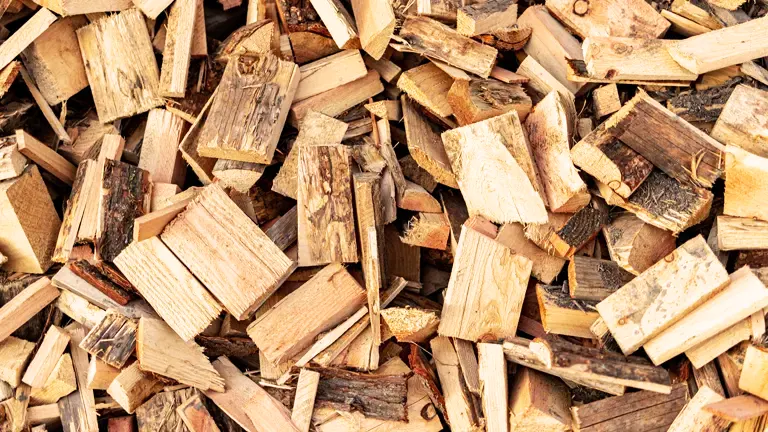
Convenient Features of Sawmill Off-Cuts
- Due to the processing methods used in sawmills, these off-cuts are usually of manageable sizes, which makes them easy to handle, split, and stack. This convenience can save users a significant amount of effort compared to dealing with larger logs that need further splitting.
- As by-products of the lumber industry, these off-cuts are abundant. With a growing demand for lumber in construction and other industries, sawmills produce a steady supply of these off-cuts that can be repurposed as firewood.
Benefits of Using Sawmill Off-cuts as Firewood
- When used as firewood, sawmill off-cuts provide an alternative to cutting down trees specifically for firewood. This helps in reducing the strain on forests, ensuring that trees are utilized more for their primary lumber than just firewood.
- Instead of being discarded, these off-cuts find a valuable use, thereby contributing to a reduction in waste from the lumber industry. This aligns with the principle of a circular economy, where materials are used to their fullest potential, minimizing waste.
- Often, these off-cuts can be acquired at a fraction of the cost of traditional firewood. This makes it an economical option for those seeking firewood for heating or recreational purposes.
- Sawmill off-cuts are ideal for various settings, be it wood-burning stoves inside homes for heating or outdoor fire pits for recreational purposes. Their versatility makes them a favorite choice for many.
2. Crafting and DIY Projects
In the vast universe of DIY and crafting, sawmill offcuts emerge as a hidden treasure. Often seen as mere remnants or waste from the lumber production process, these pieces of wood hold a wealth of potential. They can be the building blocks for countless creations, melding rustic charm with functional utility.
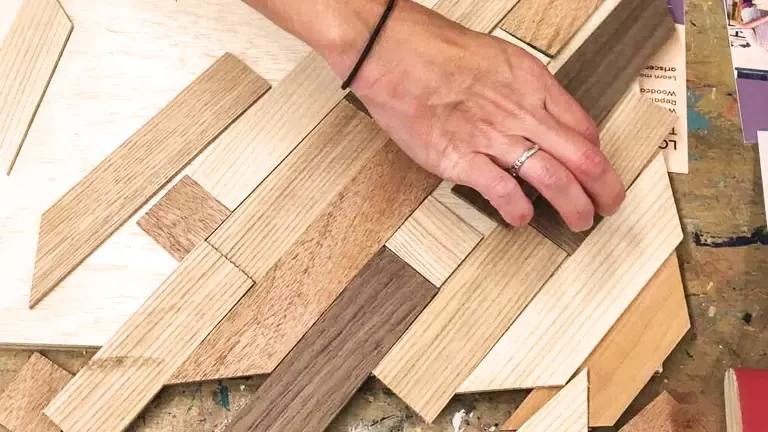
From Waste to Wonder
- Sawmill offcuts, with their natural and sometimes rough-hewn appearance, exude a rustic charm. This makes them perfect for crafting rustic picture frames, where the wood’s grain, knots, and natural imperfections become focal points, adding warmth and history to photographs or artwork.
- Those with carpentry skills or a penchant for woodworking can turn these offcuts into custom-made furniture. From side tables adorned with a mosaic of wood patterns to bookshelves with a raw, organic touch, the possibilities are vast. Using sawmill offcuts in this way ensures each piece is truly bespoke and can’t be replicated in big-box stores.
- For those inclined towards detailed artistic endeavors, offcuts can be transformed into exquisite wood carvings. Whether it’s a landscape, an animal figure, or abstract designs, these creations can serve as unique decor items or even be sold as artisanal crafts.
- Beyond artistic creations, sawmill offcuts can be fashioned into practical household items. Think of wooden coasters, showcasing the rich textures and patterns of the wood, or trivets to protect tabletops, and even custom-made handles for cabinets or drawers.
- Venturing into the realm of fashion and jewelry, the smaller, more delicate offcuts can be crafted into statement jewelry pieces. Wood, with its natural warmth, can be turned into beautiful pendants, earrings, or brooches, each piece telling a story of its origin.
Broader Impacts of Using Sawmill Offcuts
- By repurposing sawmill offcuts, we promote an eco-conscious mindset. This practice prevents unnecessary waste and reduces the strain on our forests, ensuring that every part of a felled tree is put to good use.
- Acquiring offcuts, often seen as by-products, is generally more economical than purchasing processed lumber. This affordability can make DIY projects more accessible and encourage more individuals to engage in crafting, benefiting from the therapeutic process of creation.
- Using sawmill offcuts can also foster a deeper appreciation for woodworking and craftsmanship. It challenges DIY enthusiasts to think creatively, working with irregular shapes and sizes, and potentially reigniting traditional crafting techniques.
3. Wood Chips and Mulch
The journey of wood doesn’t just end at lumber and firewood. In the form of wood chips and mulch, even the smallest remnants of timber, like sawmill off-cuts, can find a renewed purpose. When shredded or chipped, these off-cuts metamorphose into invaluable assets for gardeners, landscapers, and eco-enthusiasts.
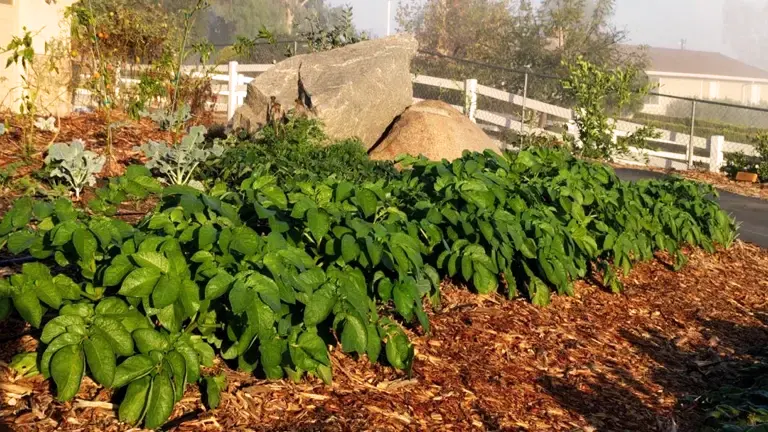
Benefits of Wood Chips Derived from Off-Cuts
- One of the primary challenges gardeners face is the relentless growth of weeds that compete with desired plants for nutrients, water, and space. Wood chips, when spread as mulch, act as a barrier, making it difficult for weeds to emerge. This not only aids in a cleaner garden bed but also reduces the need for chemical herbicides.
- Wood chips have a natural ability to retain moisture. When spread over garden beds, they reduce the rate of evaporation from the soil surface. This ensures that plants have a consistent supply of water, especially during dry spells, reducing the frequency of watering and conserving a precious resource.
- The insulating properties of wood chips help regulate the temperature of the soil. In scorching conditions, they shield the soil from direct sunlight, keeping it cooler. Conversely, during colder months, they help retain warmth, offering plants some protection from frost.
- As wood chips decompose over time, they release organic matter back into the soil. This process enriches the soil with nutrients and enhances its structure, promoting better root growth and overall plant health.
- In areas prone to erosion due to wind or water runoff, wood chips can provide a protective layer, helping to hold the soil in place. This not only preserves the garden’s terrain but also safeguards the vital microorganisms living in the topsoil.
- Beyond the functional benefits, wood chips add a touch of rustic charm to garden paths and beds. Their natural color and texture can complement a variety of plants and flowers, creating a harmonious and visually pleasing landscape.
Sustainability and the Environment
Repurposing sawmill off-cuts into wood chips underscores the importance of a circular economy and waste minimization. Instead of discarding or burning these off-cuts, transforming them into mulch ensures every part of the tree is utilized, reducing waste and promoting sustainability. Moreover, using local off-cuts reduces the carbon footprint associated with transporting mulch from distant locations.
4. Animal Bedding
The versatility of wood extends far beyond construction and craftsmanship. One of the ingenious uses of wood off-cuts, when shredded, is to provide bedding for farm animals. Not only does this approach present an environmentally friendly solution to managing wood waste, but it also contributes significantly to the health and well-being of livestock and, subsequently, to soil vitality.
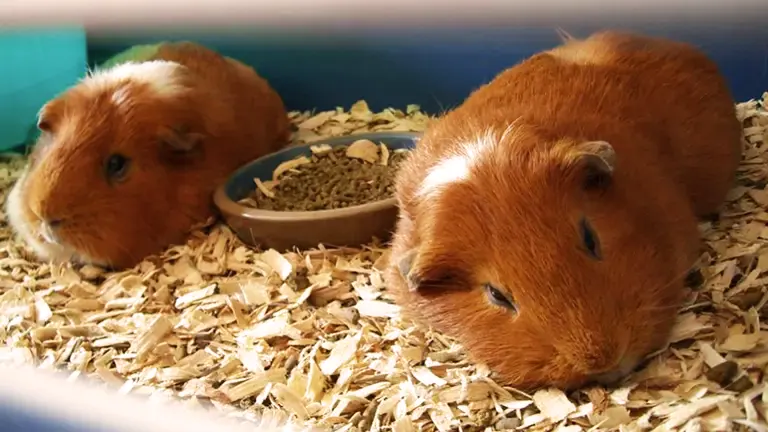
Benefits of Shredded Wood Off-Cuts as Animal Bedding
- One of the foremost advantages of shredded wood off-cuts as bedding is their superior absorbency. The wood effectively soaks up animal urine and moisture, ensuring that the bedding remains relatively dry. This is crucial in preventing the growth of harmful bacteria and molds, which thrive in moist conditions.
- A thick layer of wood shavings provides a soft and cushioned surface for animals, making it comfortable for them to lie on. This promotes better rest and reduces the chances of injuries or sores that can arise from lying on hard or uneven surfaces.
- Wood naturally contains aromatic compounds that can neutralize odors. When used as animal bedding, wood shavings can help in managing and reducing the strong smells often associated with livestock pens, contributing to a healthier environment for both animals and farm workers.
- Wood has insulating properties. As bedding, it aids in maintaining a steady temperature in the stall, providing warmth in colder months and a cooler surface during hotter periods.
- By using shredded off-cuts as animal bedding, farmers can find a cost-effective alternative to purchasing commercial bedding materials. This not only saves money but also ensures that waste from sawmills is put to productive use.
- When it’s time to replace the bedding, the used wood shavings, rich with animal droppings, are an excellent addition to compost piles. The carbon from the wood shavings balances the nitrogen from the manure, facilitating quicker decomposition. The resulting compost is rich in nutrients, perfect for enriching the soil.
Additional Considerations
While wood off-cuts serve as fantastic animal bedding, it’s essential to ensure they are free from harmful chemicals, paints, or treatments that might be toxic to animals. It’s also a good practice to monitor for any potential allergic reactions in animals when first introducing wood-based bedding.
5. Manufacture of Particle Board and Fiberboard
Wood, one of nature’s most versatile materials, has been an essential component in human construction and creativity for centuries. However, as global consciousness shifts towards more sustainable practices, the timber industry and related manufacturing processes are undergoing transformative changes. A significant stride in this direction is the increasing use of sawmill off-cuts in the production of particle board and fiberboard. These reconstituted wood products are not only eco-friendly but also help in driving efficient resource management in the woodworking sector.
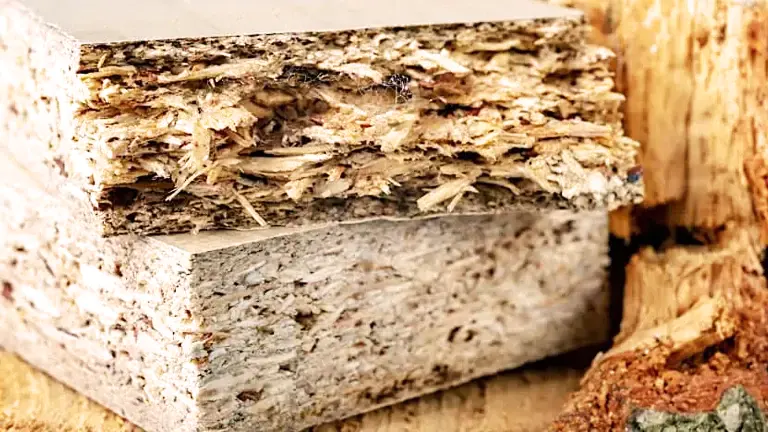
Understanding Particle Board and Fiberboard
- Particle Board: As the name suggests, particle board is engineered from wood particles like wood chips, sawmill shavings, or even sawdust. These particles are combined with an adhesive, often a resin, and then pressed and heated until they form a solid board. Its versatility and cost-effectiveness make it a popular choice in the production of low-cost furniture and shelving.
- Fiberboard: Fiberboard, particularly medium-density fiberboard (MDF), is produced similarly but uses smaller wood fibers instead of larger wood particles. The resulting board is denser and smoother than particle board, making it ideal for more detailed work, such as cabinet doors or decorative paneling.
Advantages of Using Off-cuts in Production
- By utilizing off-cuts, manufacturers tap into a resource that might otherwise be discarded or used less efficiently. This not only reduces waste but also ensures a more comprehensive utilization of every tree harvested.
- Off-cuts typically represent a more economical raw material compared to freshly sourced wood. This reduced cost in raw materials can lead to more competitively priced end products, benefiting both manufacturers and consumers.
- The use of off-cuts aligns with global efforts to minimize deforestation and promote sustainable logging practices. By decreasing the reliance on fresh timber, the pressure on forests diminishes, helping in conserving biodiversity and reducing carbon emissions associated with logging activities.
- Particle board and fiberboard made from off-cuts often have a more uniform texture compared to those made from whole wood, due to the controlled size and mixture of the particles or fibers. This uniformity is often desirable in manufacturing, as it provides consistency across products.
- As the demand for sustainable products grows, there’s an incentive for manufacturers to innovate and improve the quality of boards made from off-cuts, leading to better-performing and more eco-friendly products.
Applications in Modern Manufacturing
Reconstituted wood products like particle board and fiberboard are ubiquitous in contemporary manufacturing:
- From bookshelves to desks, these boards are foundational in the production of affordable furniture, especially in the flat-pack industry.
- Both interior and exterior paneling for homes and offices can be crafted from these materials.
- Certain types of laminated flooring use a base layer made from particle board or MDF.
- Their smooth and consistent surface makes them ideal for decorative elements in homes, such as moldings or cabinet facings.
6. Playgrounds and Outdoor Areas
Outdoor play is essential for children’s development, offering both physical benefits and fostering a connection to nature. In designing these spaces, safety, and aesthetics are of paramount importance. Sawmill off-cuts, when chipped or shredded, present an excellent solution, marrying these two aspects beautifully.
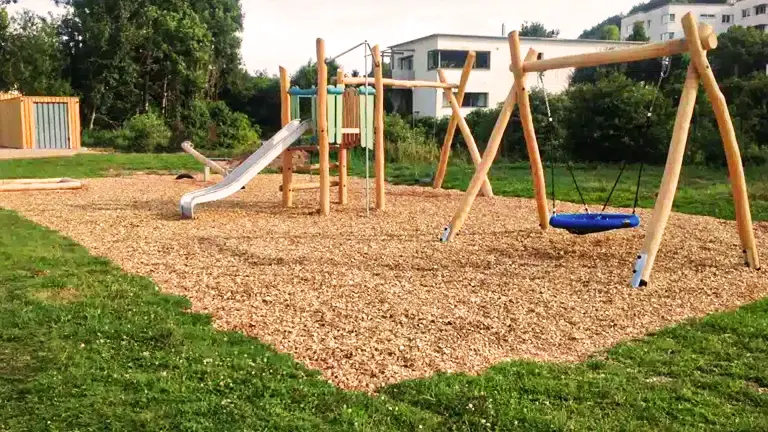
Why Chipped or Shredded Off-Cuts are Perfect for Playgrounds
- Falls are inevitable in playgrounds. The soft, cushioned surface provided by wood chips can significantly mitigate the impact of such falls, reducing the risk of serious injuries. This natural “shock absorber” quality of wood chips makes them a favored choice in areas beneath swings, slides, and climbing structures.
- Playgrounds surrounded by or integrated within green spaces benefit from the natural look of wood chips. Their earthy tones seamlessly blend with the environment, creating an inviting and harmonious play area.
- Wood chips are relatively long-lasting and require minimal maintenance. They don’t compact as easily as sand or dirt, ensuring that the playground retains its cushioned quality for longer. And when they do begin to thin out, replenishing the area is simple and cost-effective.
- Using chipped off-cuts is a sustainable choice. Repurposing wood waste reduces the strain on landfills and promotes the efficient use of timber resources.
- A layer of wood chips can act as a natural barrier against weeds, ensuring the playground remains neat and reducing maintenance work.
- Wood chips have an insulating property. In summer, they don’t heat up as much as alternatives like rubber, providing a cooler surface for children to play on. In cooler months, they can retain warmth, ensuring the play area remains usable.
Additional Applications in Outdoor Areas
- Wood chips can be used to create natural-looking pathways in gardens, parks, or around outdoor seating areas. These paths are comfortable to walk on, deter weed growth, and prevent muddy conditions after rains.
- Beyond playgrounds, wood chips can be employed in general landscaping to demarcate spaces, surround trees or shrubs, or create decorative garden beds.
- In sloped areas, wood chips can help in preventing soil erosion, as they create a protective layer that reduces the direct impact of rainwater.
Precautions and Considerations
While wood chips offer numerous benefits, it’s essential to ensure that the off-cuts used are free from harmful chemicals, treatments, or paints that might be unsafe for children. Regularly inspecting the playground for potential hazards, like sharp wood splinters, is also crucial.
7. Erosion Control
Erosion – the wearing away of topsoil due to natural forces like water, wind, and ice – poses a significant threat to landscapes, infrastructure, and ecosystems. Maintaining the integrity of slopes and embankments is vital to prevent landslides, loss of fertile soil, and water pollution. One effective and environmentally friendly approach to combatting this is the use of wood chips, particularly those derived from bark-rich off-cuts.
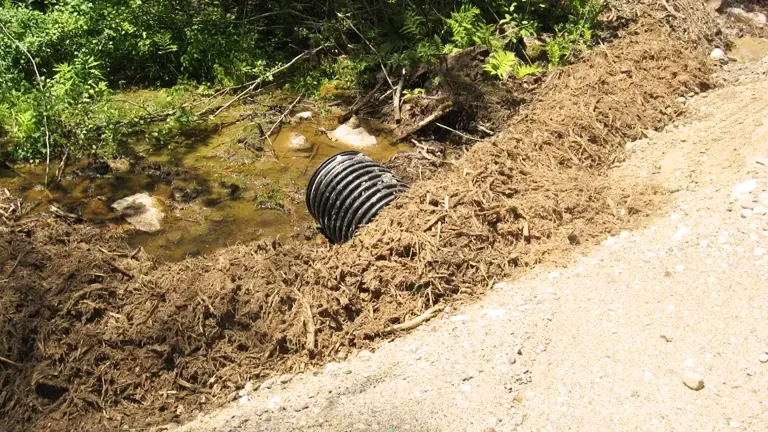
Benefits of Using Bark-Rich Wood Chips for Erosion Control
- When spread across vulnerable areas, wood chips form a dense mat that absorbs the impact of falling raindrops. This physical barrier drastically reduces the force with which rain hits the soil, minimizing the detachment of soil particles.
- The porous nature of wood chips slows down the flow of water across the surface. This reduced runoff velocity gives water more time to percolate into the soil, lessening the chances of surface erosion.
- Wood chips enhance the soil’s capacity to retain moisture. This not only benefits plant life but also helps maintain the soil’s structure, making it less susceptible to being washed away.
- Over time, bark-rich wood chips can become a habitat for beneficial microorganisms and insects. These tiny creatures further stabilize the soil by breaking down organic matter and enhancing soil structure.
- In addition to their functional benefits, wood chips provide a natural, rustic appearance that can seamlessly blend with the surrounding environment, making them ideal for parks, nature trails, and other public areas.
- Utilizing bark-rich off-cuts from sawmills diverts waste from landfills and promotes a circular economy where every part of the tree is put to good use.
Implementation Tips
- Before applying wood chips, it’s advisable to clear the area of any large debris or weeds. In highly vulnerable areas, consider placing a layer of erosion-control fabric beneath the wood chips for added protection.
- For effective erosion control, a depth of 2 to 4 inches of wood chips is typically recommended. However, the precise depth can vary based on the steepness of the slope and the type of soil.
- Periodically check the wood-chipped areas, especially after heavy rainstorms, to ensure they remain intact. Replenish areas where the chips have thinned out or have been washed away.
- Ensure that the wood chips, especially those used in public areas, are free from sharp splinters, harmful chemicals, or pathogens.
8. Mushroom Cultivation
The intricate and fascinating world of fungi has been a subject of intrigue for scientists, gourmet chefs, and nature enthusiasts alike. Mushrooms, in particular, have both culinary and medicinal significance and are cultivated worldwide for these attributes. For those looking to dive into the practice of mushroom cultivation, utilizing wood off-cuts, especially from hardwood trees, provides a sustainable and efficient method.
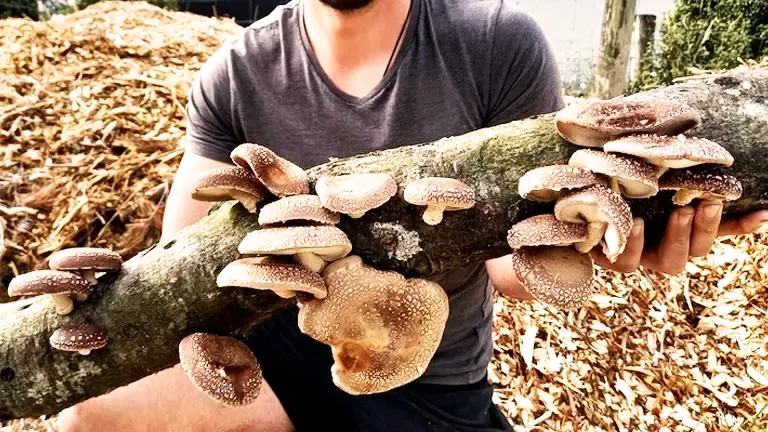
Why Hardwood Off-Cuts are Ideal for Mushroom Cultivation
- Many mushroom species in the wild naturally grow on dead or decaying hardwood trees. The wood offers essential nutrients, allowing the fungi to thrive. Mimicking this natural habitat with hardwood off-cuts can yield successful cultivation results.
- By repurposing sawmill waste, cultivators reduce the need for other, potentially less sustainable substrates. This promotes an eco-friendly cycle where waste is turned into valuable produce.
- Hardwood off-cuts, especially when used in the form of logs, can support several fruiting cycles of mushrooms before they are entirely decomposed by the fungal mycelium. This gives cultivators multiple harvests from a single piece of wood.
- For those looking to cultivate mushrooms for sale, utilizing off-cuts can be a cost-effective way to obtain substrate, especially if they have direct access to a sawmill or lumber processing facility.
Steps for Cultivating Mushrooms on Hardwood Off-cuts
- Choose hardwood off-cuts from species like oak, maple, or beech. Avoid woods that have natural antifungal properties, such as cedar or redwood.
- If using larger off-cuts or logs, ensure they are free from mold or other contaminants. It’s also recommended to soak or boil the wood to increase its moisture content and kill any potential competitors.
- Purchase mushroom spawn (a mixture of mycelium and a substrate, like grains). Drill holes into the off-cuts or logs, then fill them with the spawn. Seal the holes with beeswax or food-grade wax to prevent contamination.
- Place the inoculated wood in a shaded, humid environment. Over time, the mushroom mycelium will colonize the wood.
- Once fully colonized, which can be seen by the white mycelial network covering the wood, it’s time to induce fruiting. This often involves adjusting light, temperature, and moisture conditions to stimulate mushroom growth.
- Once the mushrooms have fully grown, which can be identified by the maturity of their caps, they can be gently twisted off the substrate.
- After the first harvest, with proper care, the same off-cut or log can produce more mushroom flushes in the coming weeks or months.
Mushroom cultivation on hardwood off-cuts is a beautiful confluence of waste management, agricultural innovation, and nature’s wonder. By converting what might otherwise be discarded into a thriving bed for mushrooms, cultivators demonstrate how intertwined and resourceful our relationship with nature can be. Whether for gourmet cooking, medicinal applications, or just the sheer joy of growing, mushrooms cultivated on hardwood off-cuts are a testament to sustainable practices in agriculture.
9. Smoking and Grilling
The culinary world is teeming with age-old traditions and techniques that have been passed down through generations, and smoking is one of those treasured methods. This technique, which involves cooking food at a low heat in the presence of smoke, is revered for the distinct, rich flavors it imparts. As it happens, sawmill off-cuts, under the right circumstances, can become a chef’s ally in this aromatic endeavor.

The Art of Using Wood Off-Cuts for Smoking and Grilling
- Not all wood is created equal when it comes to smoking. While hardwoods, like oak, hickory, cherry, and apple, impart delightful flavors, other woods can produce bitter or even toxic smoke. It’s essential to be informed about the wood’s source and ensure it’s suitable for culinary use.
- Different woods offer different flavor profiles. For instance, mesquite gives a strong and earthy flavor, applewood provides a sweet and fruity aroma, and hickory imparts a robust, bacon-like taste. By choosing the right off-cut, culinary enthusiasts can perfectly match or contrast flavors with the food being grilled or smoked.
- Instead of purchasing specialized wood chips or chunks for smoking, using off-cuts can be a cost-effective alternative. Plus, repurposing these off-cuts can help reduce waste, aligning with sustainable practices.
- It’s imperative to ensure that the wood off-cuts haven’t been treated with chemicals, varnishes, or paints. Only untreated, natural wood should be used for grilling and smoking, as chemicals can produce harmful fumes when burned.
- For consistent smoking, off-cuts should be of a uniform size. They might need to be further split or chipped. Some chefs also prefer to soak wood in water for several hours before use, as this can produce more smoke and prolong the smoking process.
- Once the grill or smoker is ready, place the off-cuts either directly on the coals or in a smoker box. As they smolder, they’ll produce the desired smoke, enveloping the food and infusing it with flavor.
Tips for the Best Smoking Experience
- Moderation: While the temptation to add more wood for a smokier flavor might be strong, it’s best to err on the side of caution. Too much smoke can overpower the food’s natural flavors.
- Ventilation: Ensure there’s adequate airflow in the smoking apparatus. This will feed the smoldering off-cuts with oxygen, producing clean smoke and preventing the wood from burning too quickly.
- Experimentation: Don’t be afraid to mix and match different wood off-cuts or combine them with herbs and spices. This can lead to unique and delightful flavor combinations.
10. Eco-art Installations
In recent years, the art world has seen a surge of interest in eco-art – art with a message or purpose aimed at promoting environmental sustainability. As artists turn to sustainable materials to shape their expressions, sawmill off-cuts have emerged as a symbol of repurposing and recycling, offering a unique canvas for eco-art installations.
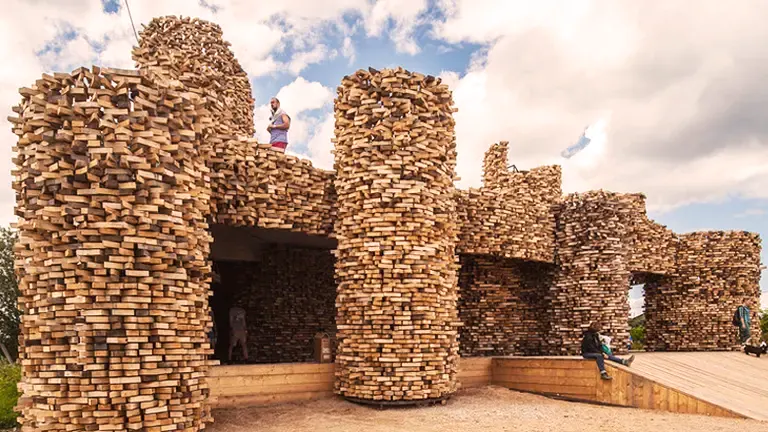
The Potential of Off-Cuts in Artistic Expression
- Each piece of off-cut carries with it a history – from the tree, it was part of, to the mill it was processed in. Artists can utilize this inherent narrative, giving voice to the silent journey of wood, and emphasizing the importance of valuing every part of nature’s gifts.
- Off-cuts come in various shapes, sizes, and textures. This variety allows artists to be imaginative and versatile in their creations, be they sculptures, mosaics, or larger-than-life installations.
- The rugged, organic appearance of off-cuts can add depth and authenticity to artworks. They carry the markings, grains, and imperfections of natural wood, making them a genuine representation of nature in art.
- : By using off-cuts, artists can spotlight the importance of recycling and waste reduction. Such artworks can serve as a poignant reminder that what might be deemed as ‘waste’ can be transformed into something beautiful and meaningful.
- Off-cuts can be used to create interactive art pieces where visitors can touch, feel, and even rearrange components. Such tactile experiences can foster a deeper connection between the audience and the environmental message being conveyed.
- Procuring off-cuts for art projects can often be more cost-effective than sourcing new materials. Moreover, repurposing these off-cuts reduces the strain on forests and decreases waste in landfills.
Amplifying the Impact
- Alongside the art installation, artists can provide information about the origin of the off-cuts, the importance of sustainable forestry, and tips for reducing waste. This educational component can amplify the impact of the artwork by informing and inspiring viewers to take action.
- Engaging communities in the creation of eco-art using off-cuts can promote a sense of collective responsibility towards the environment. Community-based projects can help spread the message further, fostering local engagement and awareness.
- Displaying eco-art installations in public spaces, such as parks, squares, or transport hubs, can ensure a wider audience. The public setting can stimulate discussions, debates, and reflections on sustainability, reaching people from all walks of life.
All in All Conclusion
Sawmill off-cuts aren’t just pieces of leftover wood; they’re opportunities waiting to be seized. By finding innovative ways to repurpose them, we can reduce waste, save resources, and even discover new avenues for creativity and commerce. The next time you come across some off-cuts, remember: there’s potential in every piece.
Related Articles:
- 5 Best Uses for Wood Pallets 2023
- Best Uses of Sawdust 2023
- Best Uses for Wood Stove Ash 2023
- Best Uses For Leftover Lumber 2023
- Best Uses And Ways To Dispose Slab Woods From Sawmill 2023
FAQs
- What are sawmill off-cuts?
Sawmill off-cuts are the pieces of wood that are left over after the primary cutting process in a sawmill. These pieces can include various sizes and shapes of wood that are not part of the intended lumber products. - What can I do with sawmill off-cuts?
Sawmill off-cuts can be repurposed for various purposes. They can be used for crafting, woodworking projects, making furniture, creating decorative items, or even as fuel for heating. - Are sawmill off-cuts suitable for woodworking projects?
Yes, sawmill off-cuts are often used in woodworking projects, especially for smaller items like jewelry boxes, picture frames, and coasters. Their unique shapes and sizes can add character to these projects. - Can I burn sawmill off-cuts in a fireplace or wood stove?
Burning sawmill off-cuts in a fireplace or wood stove is generally acceptable, but you should ensure that the wood is properly dried and seasoned to prevent excessive smoke and creosote buildup. Avoid burning treated or painted wood, as it can release harmful chemicals. - Do sawmill off-cuts have any commercial value?
While sawmill off-cuts are considered waste in many cases, they can still have commercial value. Some companies specialize in selling off-cuts for crafting or industrial purposes like pallet manufacturing. - Are there any safety concerns when handling sawmill off-cuts?
Yes, safety is important when handling sawmill off-cuts, especially if you’re using them for DIY projects. Wear appropriate safety gear, such as gloves and eye protection, and be cautious of any nails, staples, or other debris that might be present in the wood. - How can I store sawmill off-cuts?
Sawmill off-cuts should be stored in a dry, well-ventilated area to prevent mold growth. You can stack them neatly or store them in bins or containers to keep your workspace organized. - Are there any creative ways to use sawmill off-cuts in home decor?
Absolutely! Sawmill off-cuts can be turned into unique wall art, rustic shelves, wooden signs, and even mobile plant stands. Their natural and irregular shapes can add a charming touch to your home. - Do sawmill off-cuts have a positive environmental impact?
Repurposing sawmill off-cuts can have a positive environmental impact by reducing waste. By finding new uses for these leftover pieces of wood, you contribute to sustainability and minimize the demand for virgin lumber. - Can I request specific types of wood for sawmill off-cuts?
Some sawmills might offer options to request specific types of wood for off-cuts, while others may provide a mix of wood species. It’s best to inquire with the sawmill about their policies and options.
We’re eager to learn from you! Share your personal creativity and experiences in utilizing sawmill off-cuts in the discussion section. Your innovative ideas could be invaluable for inspiring others to make the most out of their leftover wood pieces and embark on new woodworking endeavors!

David Murray
Forestry AuthorI'm David Murry, a forestry equipment specialist with a focus on chainsaw operation. With over 13 years of experience, I've honed my skills in operating and maintaining a wide range of machinery, from chainsaws to log splitters. My passion for the outdoors and commitment to sustainable forestry drive my work, which emphasizes safety, efficiency, and staying updated with industry advancements. Additionally, I'm dedicated to sharing my expertise and promoting environmental awareness within the forestry community.

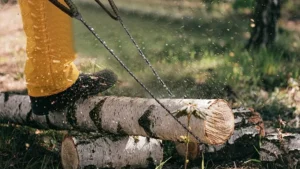











Working with contractors develop offcuts of Cedar lumber S4S KD and trying to find buyers who can turn this wonderful resource into something positive and useful
Jonathan
September 30, 2023 10:25 am